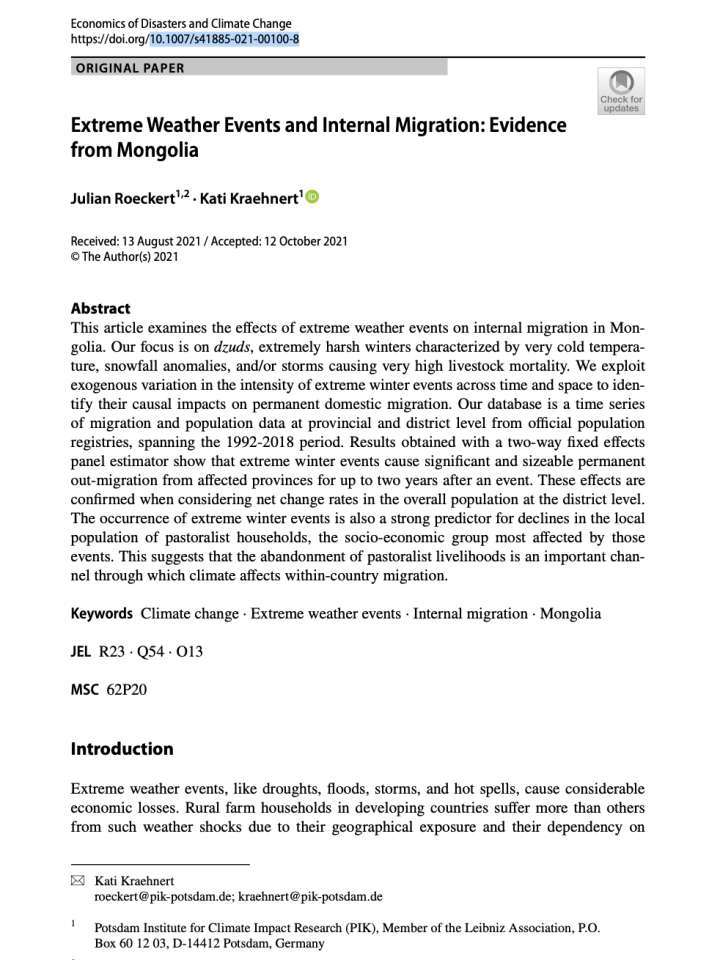Extreme weather events and internal migration: Evidence from Mongolia
This article examines the effects of extreme weather events on internal migration in Mongolia. Our focus is on dzuds, extremely harsh winters characterized by very cold temperature, snowfall anomalies, and/or storms causing very high livestock mortality. We exploit exogenous variation in the intensity of extreme winter events across time and space to identify their causal impacts on permanent domestic migration. Our database is a time series of migration and population data at provincial and district level from official population registries, spanning the 1992-2018 period.
Results obtained with a two-way fixed effects panel estimator show that extreme winter events cause significant and sizeable permanent out-migration from affected provinces for up to two years after an event. These effects are confirmed when considering net change rates in the overall population at the district level. The occurrence of extreme winter events is also a strong predictor for declines in the local population of pastoralist households, the socio-economic group most affected by those events. This suggests that the abandonment of pastoralist livelihoods is an important channel through which climate affects within-country migration.
Explore further
